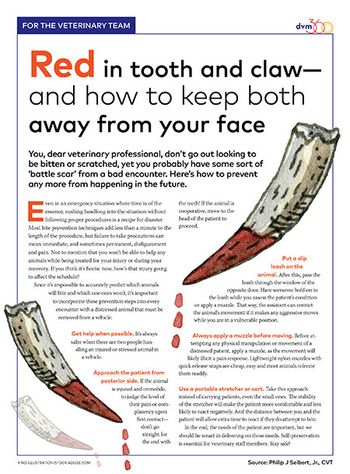
You, dear veterinary professional, dont go out looking to be bitten or scratched, yet you probably have some sort of battle scar from a bad encounter. Heres how to prevent any more from happening in the future.

You, dear veterinary professional, dont go out looking to be bitten or scratched, yet you probably have some sort of battle scar from a bad encounter. Heres how to prevent any more from happening in the future.
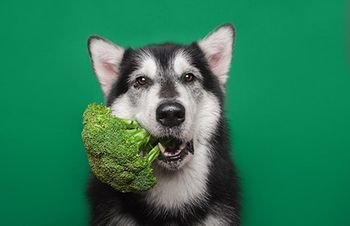
Ideal canine and feline diets should be based on individual pet needs and growing science around nutrientsnot opinion, philosophy or views of whats culturally acceptable, says this nutrition-minded veterinarian.
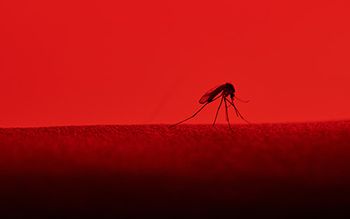
Heartworm disease is affecting more dogs and cats in more parts of the country than ever, in part due to the long-distance transport of shelter animals. Here's what you need to know to educate your veterinary clients.
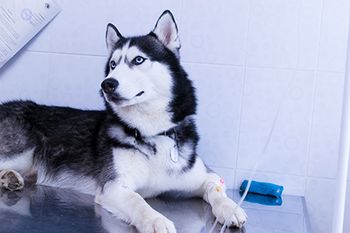
Patient assessment and formulation of a fluid plan is a vital component of patient care in a veterinary practice, and veterinary technicians and nurses play a significant role in both. Lets get into it.

Did you think youd be fielding this many nutrition questions in the veterinary clinic? Neither did your colleagues, according to the 2019 dvm360 Nutrition Study.
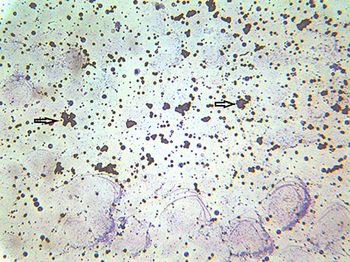
Performing a manual differential on every CBC you do sounds like a drag, but it could make all the difference for your veterinary patients.

After I shared my own story with the veterinary world regarding depression and suicidal thoughts, I learned how valuable it is to be there for that person and how an inch can, in fact, be a mile.

Veterinary dermatologist Dr. Darin Dell weighs in on some particularly perplexing aspects of this ear-itating condition.

Find out how often veterinarians discuss nutrition with clients, how often clients ask and the biggest prompt for discussion in this data from the 2019 dvm360 Nutrition Study.

Sit. Stay. Stress. Good boy! If youre suffering from chronic stress, your dogs feeling it too, a new study says. Here are the details veterinary professionals need to know.

A blood gas will not only help your veterinarian, but will ultimately help your patients in an emergency situation. Heres what you need to know.

Vet teams: Dont underestimate the power of your guidance when encouraging pet owners to make objective decisions about pet food. Youre better armed than you think.

Want to dig into your own personality or gather a fun (and perhaps useful) profile of your veterinary team? Here are some of the most popular personality tests floating around.
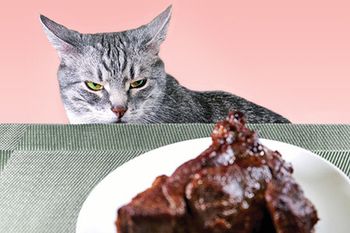
When your veterinary clients hold fast to their deepest beliefs about whats best (and worst) for their pet to eat, you make think theyre crazybut its also because they care.

Fun in the sun can mean serious problems for overheated dogs. Help your clients know what to watch for and how to help when the pet is in trouble.

Brush up on your feline facts, veterinary team members, while you disabuse your well-meaning but ill-informed cat clients of some feline fallacies. Dont miss the client handout at the end!

Dont cell yourself short: tap into the potential of veterinary cytology with these expert tips on obtaining and evaluating specimens.
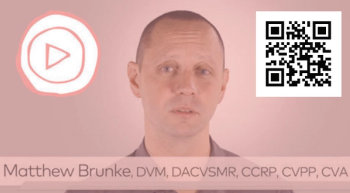
The pool of potential cases for rehabilitation services in general veterinary practice is much bigger than you think, says Fetch dvm360 speaker Dr. Matthew Brunke.
![veterinary-close-up-of-angry-chihuahua-growling-shutterstock-79913740-[465070090]-{6629430}_450-1.jpg](https://cdn.sanity.io/images/0vv8moc6/dvm360/0c5a2c8a01317031bdbe19b2255595a410d66a35-450x300.jpg?w=350&fit=crop&auto=format)
This empathy map helps you navigate the tension in your job (and your life!) that youve been avoiding. Key elements: Plan ahead, think about others feelings, and imagine how they might react.

A new series of questions for veterinary clients could shed a light on a particular dogs tendencies to get peeved when expectations are subverted.
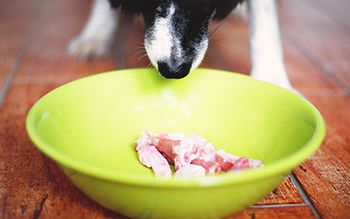
You may not want to hear it, but clients interest in unconventional diets isnt going away anytime soon. This veterinary nutritionist says its time to listen to their reasons and work with themnot shut them down.

This is a powerful example of how understanding the way cats think and making changes to accommodate their needs really can prevent illness and save liveseven under the worst of circumstances.

If you or another veterinary professional need help right now, we have contact information right now. If youd like to dig deeper into our professions special resources, we have that here too.
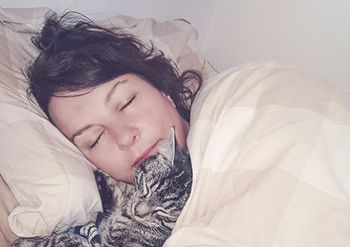
Veterinary team members! Know cat owners who regularly suffer 4 a.m. wakeup calls of cat paws to the face? (Or are you that cat owner?) Well, rest easy. Solutions are out there.

A veterinarian and practice owner has launched an app for iOS and Android to help pet parents prevent accidental drug and food toxicities in their cats and dogs.
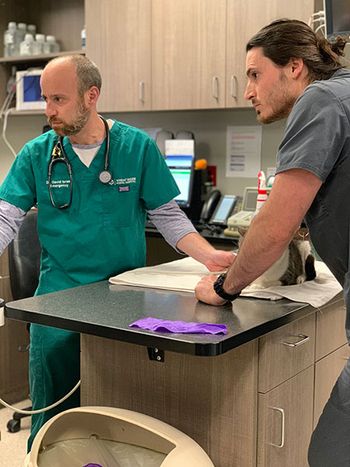
Pet owners are often frantic when they show up at the emergency veterinary hospital. Helping them know what to expect through all the steps of their visit is a simple way to alleviate worry and stress.

Noncompliance with recommended treatment is a common concern in veterinary medicine, but existing literature provides few clues to its causes.
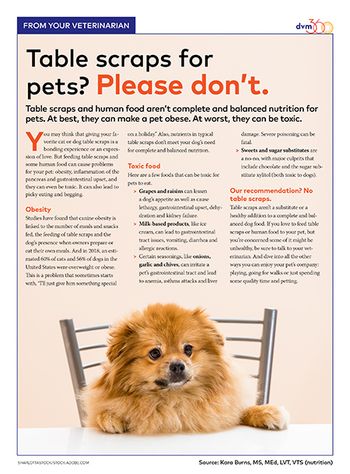
When it comes to advice for veterinary clients, I discourage feeding pets table scraps and human food. The pet obesity epidemic and the danger of toxicities mean I lean away from encouraging sharing of food to maintain the human-animal bond.
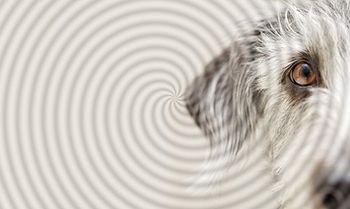
Wield the benevolent brainwashing powers of classical conditioning and desensitization to both fix and prevent problem behaviors in your veterinary practice.
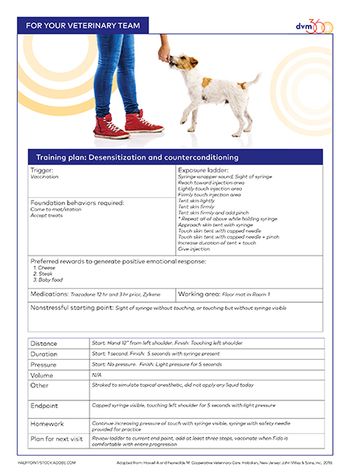
Conditioned responses (like the dog that panics at the sight of a syringe) can make treatment difficult, unpleasant or just plain impossible for both pet owners and veterinary professionals. Use this free training worksheet to develop and stick to a plan for fixing behavior problems in your practice.